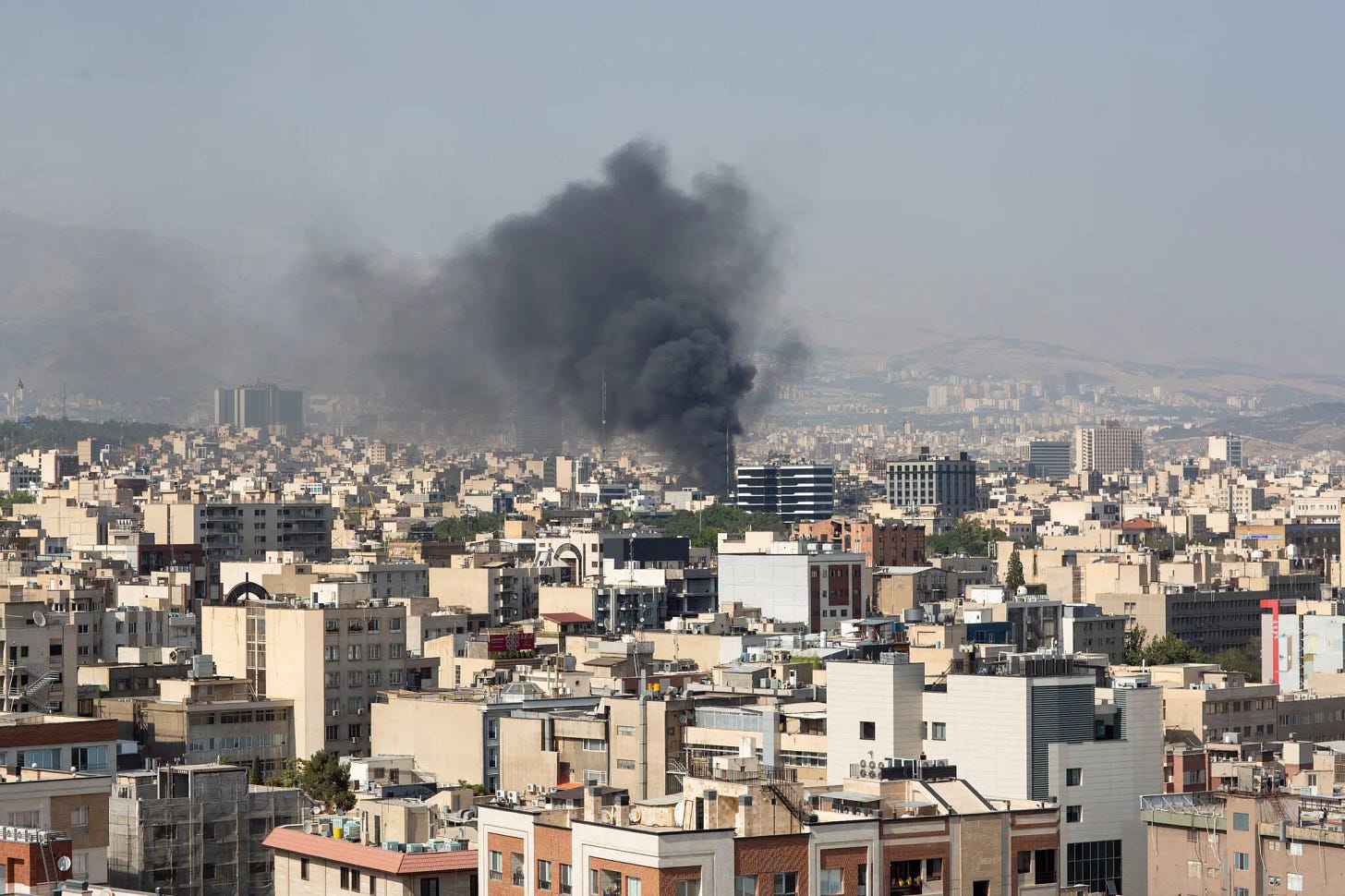Today's News: U.S. and Israeli Escalation Toward Iran
President Donald Trump, initially invested in diplomacy, shifted toward military alignment with Israel following growing frustration with Iran’s negotiation posture.
Photo: Arash Khamooshi for The New York Times
Overview
Date: June 13–17, 2025
Topic: U.S. and Israeli Escalation Toward Iran Amid Conflicting Intelligence and Intensifying Military Conflict
Summary: Israel launched a sustained military campaign against Iran, citing nuclear threats and regional provocations. President Donald Trump, initially invested in diplomacy, shifted toward military alignment with Israel following growing frustration with Iran’s negotiation posture. Israel’s intelligence claims, asserting an imminent Iranian nuclear threat, failed to convince U.S. intelligence officials, causing friction between the allies. Meanwhile, Iran retaliated with missile attacks, sparking widespread civilian panic and regional instability. The U.S. has increased military assets in the region but has not yet committed to direct offensive operations. Calls for restraint coexist with mounting pressure for escalation.
Sources
The New York Times: How Trump Shifted on Iran Under Pressure From Israel
NBC News: Desperate Iranians try to flee Israeli bombardments
Fox News: Trump convenes Israel-Iran Situation Room meeting at White House to weigh US response
The Washington Post: Live updates: Trump weighs U.S. involvement in Iran, demands ‘unconditional surrender’
The Washington Post: Israel-Iran conflict may last only as long as their missiles hold out
The Wall Street Journal: Israel Built Its Case for War With Iran on New Intelligence. The U.S. Didn’t Buy It.
Key Points
Israel launched preemptive strikes on Iranian nuclear and military targets, citing new intelligence indicating imminent nuclear capability.
U.S. intelligence agencies disagreed with Israel’s assessment, asserting there is no clear evidence Iran has decided to build a nuclear weapon.
Trump administration initially pursued diplomacy, even sending a letter to Iran’s Supreme Leader, but shifted course amid Iranian intransigence and Israeli pressure.
Vice President JD Vance and Secretary of State Marco Rubio emphasized military preparedness while attempting to limit direct U.S. entanglement.
The U.S. surged intelligence and refueling support to Israel but withheld direct offensive action, even as options for deeper involvement were considered.
Iran’s retaliatory strikes have killed civilians in Israel, prompting emergency evacuations and intensifying public fear.
Both nations face pressure over limited missile stockpiles and mounting civilian casualties, constraining the potential for prolonged escalation.
Unique Highlights
CNN: Confirmed UN nuclear watchdog Rafael Grossi’s assessment that Israeli strikes have “significantly” damaged Iran’s enrichment facilities, particularly Natanz.
Fox News: Reported Trump’s claim that the U.S. controls Iranian airspace and could target Ayatollah Khamenei, though currently refraining.
The Washington Post: Provided detailed accounts of fuel shortages, mass evacuations, and social media censorship in Iran as civilian panic rises.
NBC News: Personal stories of Iranian civilians caught in the conflict added depth to the humanitarian crisis narrative.
The Wall Street Journal: Revealed that U.S. officials rejected Israeli intelligence as insufficiently conclusive regarding Iran’s nuclear intent.
Contrasting Details
The New York Times and The Wall Street Journal both report on internal U.S. skepticism toward Israeli intelligence. However, The New York Times emphasizes Trump's personal vacillation and eventual shift, while The Wall Street Journal focuses on the intelligence gap as the central driver of U.S. reluctance.
CNN emphasizes operational military details and international reactions (oil markets, cyberattacks), whereas NBC News and The Washington Post give greater space to civilian impacts and evacuation stories.
Fox News presents Trump’s posture as assertive and strategic, emphasizing military superiority and political resolve, while The Washington Post frames Trump’s approach as reactive, politically conflicted, and shifting under pressure.
While CNN and Fox News report on U.S. support roles like refueling and missile defense, only The New York Times and The Wall Street Journal detail internal debates over direct offensive involvement.
The Newsie Project uses AI to summarize, compare, and contrast the reporting of the major US and world online news sources.
This is an evolving project. Tools, approaches, and output formats will change over time. The Newsie Project does not attempt to provide a definitive capsule of any news story. While the incidence of errors in these summaries is low, and I attempt to spot-check details, AI tools can hallucinate. Please click through and read the articles for details (some may be paywalled).


